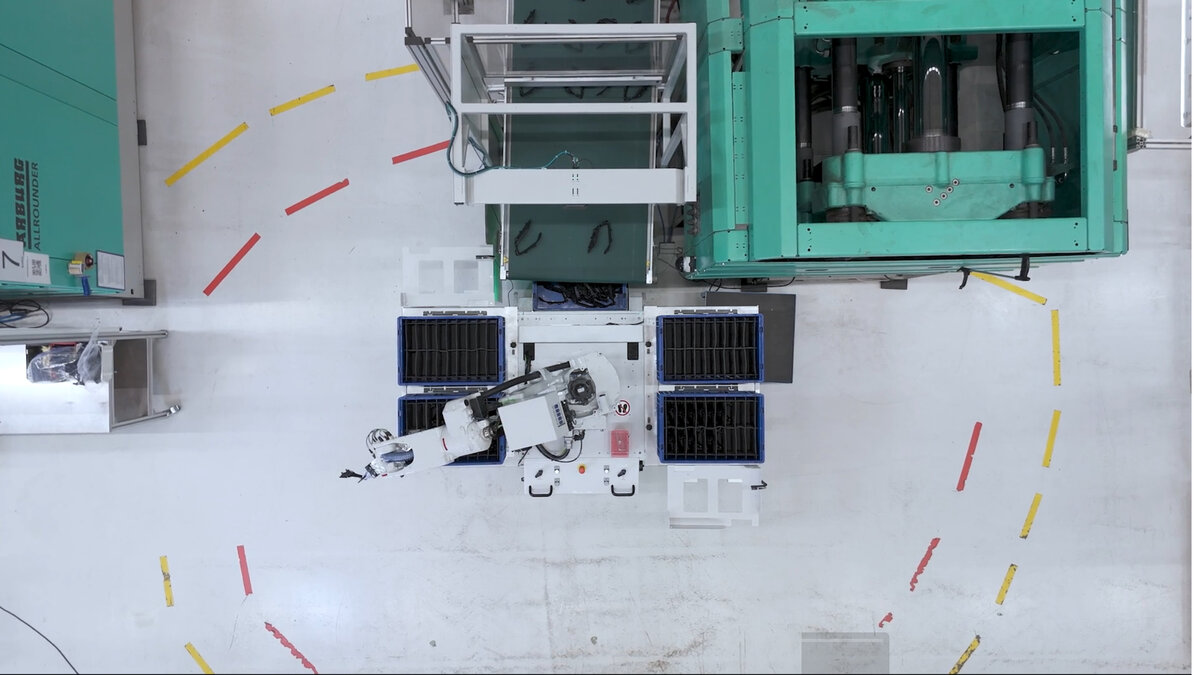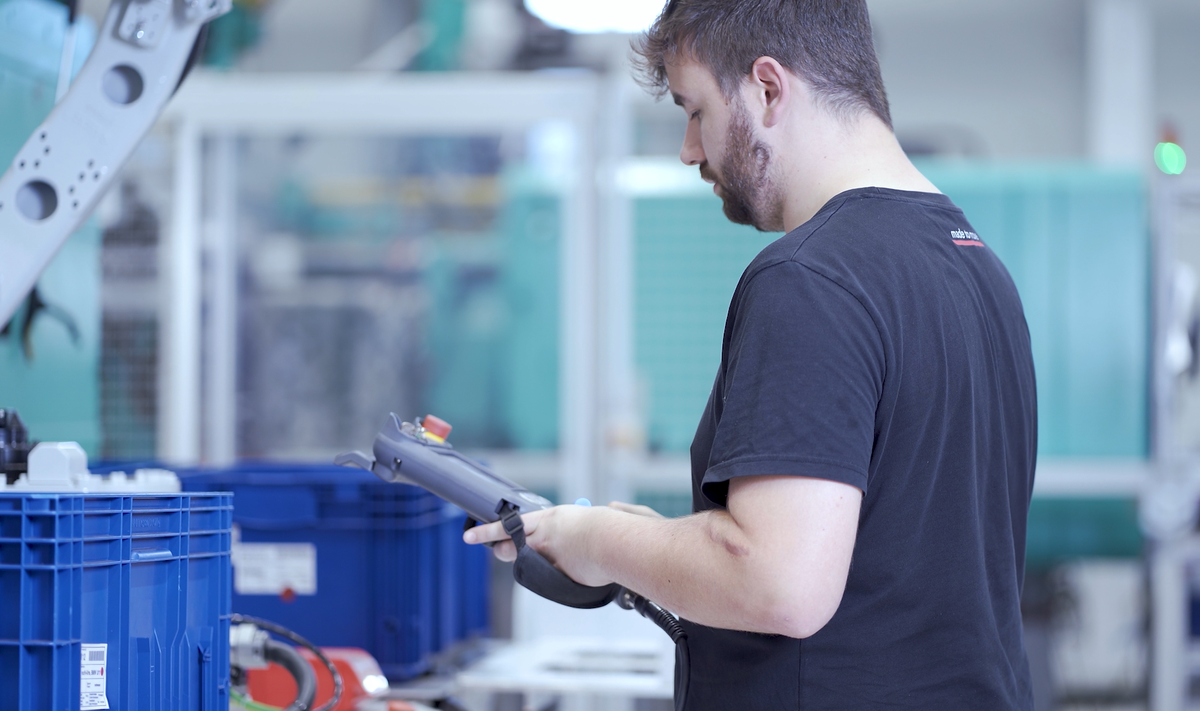Highest quality coupled with outstanding performance has a name: MOTOMAN
Complex components, chaotic arrangement – FMB automates the sorting and removal of injection molded parts
Chroff Kunststofftechnik GmbH, based in Bamberg, specializes in the manufacture of complex, high-quality plastic components for various industries. Injection-molded parts, which are produced in large quantities for a current order, must be sorted after production and placed in KLT containers. Chroff has automated this process with a handling system from FMB Maschinenbau. The modular handling system base from FMB, which is equipped with the Yaskawa GP12 industrial robot, is ideal for this task and can fully demonstrate its strengths.

High-performance camera system
The finished injection-molded parts are conveyed on a conveyor belt and transported to KLT containers provided for this purpose. The complex geometry of the parts and their non-oriented position on the conveyor belt have made subsequent processes difficult up to now. In addition, left and right components are produced by the injection molding machine and run off the conveyor belt together. These must be sorted separately into the correct containers. Until now, a specialist has taken over this task and placed the parts in the appropriate KLT containers.
"The big challenge in automating the removal process was recognizing the workpieces on the conveyor belt," explains Fabian Schäfer, electrical design engineer at FMB. Michael Vogel, head of technical design at FMB, adds: "FMB has been working with optical systems for component recognition for a long time and has built up a wealth of expertise in this area." FMB has implemented many projects in the field of randomly stored components and bin picking in recent years. In the process, the company has extensively tested various cameras and vision systems. Given the requirements here, the company relies on Keyence's all-in-one camera with integrated AI. This transmits all the necessary data to the robot for orienting the components so that it can individually grasp the components at a suitable location. With the support of artificial intelligence, the camera is also capable of performing various checks.
Possible applications include searching for production errors and recognizing text, codes, or colors. Here, the camera checks whether the component is right-handed or left-handed. This information is also sent to the robot. The components are then sorted reliably and correctly into the KLT containers. A Yaskawa GP12 is used for this purpose. With a payload of 12 kg and a reach of 1440 mm, the 6-axis industrial robot is perfectly suited for handling parts and is an established component in FMB's handling systems. FMB and Yaskawa have a long history together. FMB has been acting as a system integrator for Yaskawa industrial robots for 25 years. Over the years, the two companies have grown together. While the initial focus was primarily on loading and unloading tasks for industrial production, the spectrum is now much broader. Automation is in demand in all industries. Joining and assembly, packaging, measuring, labeling or, as in this case, removing and sorting complex injection-molded parts.

Modular and flexible – FMB base
The base handling system from FMB used here is characterized by its consistent modularity. A standardized base module is equipped with an industrial robot suitable for the area of application. Various gripper and tool systems cover a wide range of applications, and standardized expansion and function modules allow the base to be adapted to specific processes. This means that the handling system can be quickly and economically tailored to the respective requirements. In addition, it can also be easily adapted or expanded for other processes for subsequent orders. A station system that ensures the energy supply makes the roller-mounted handling system mobile. In this way, it can be docked to additional stations and used to cover multiple processes at different locations and machines within the company with a single handling system. The "container feed" module used here provides storage areas for KLT containers directly on the handling system, into which the robot places the parts. The double gripper is precise and picks up two components at once. Since Chroff also produces parts on the same injection molding machine that can only be handled with a suction cup, the double gripper can be easily changed using a quick-change device.

Automation and skilled workers go hand in hand
The skilled workers at Chroff, who are no longer blocked by sorting and removing parts, are now available for logistics and monitoring of the entire process. It is a great advantage here that the FMB base has a contactless protective device. This completely eliminates the need for separating protective devices such as fences or enclosures. Direct access to the conveyor belt and the KLT containers is possible at any time. This does not interfere with the unloading process. Radar scanners on the handling system detect when people enter the danger zone. There are two zones. If the yellow marked area is entered, the robot slows down its working speed but continues to operate. The area marked in red defines the direct danger zone. If this area is entered, the robot stops immediately. When the marked areas are left again, the radar scanners also detect this and the handling system continues the unloading process automatically. This makes it easy to check the fill level of the KLT containers or replace them with empty ones as needed without interfering with the process. Knowledge of how to operate the handling system is also not necessary.
After a brief introduction, the employees of Chroff and FMB's base are now working in parallel and hand in hand.
Further information is available at: fmb-machinery.com



















